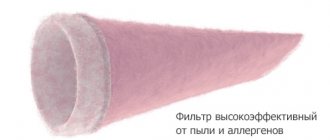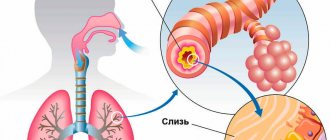Marshmallow (Althaea officinalis)
A perennial plant with an erect, slightly branched stem up to 1.5 m high and a powerful woody taproot with numerous lateral roots. The leaves are pubescent, ovate or heart-shaped, entire or with three or five lobes and an elongated apex. The flowers are white or pale pink, 2-3 cm in diameter.
The main medicinal raw material is marshmallow root, but flowers and leaves are sometimes used. Marshmallow root contains up to 35% mucous substances, starch, sugar, pectin and tannins. This ancient medicine is included in the pharmacopoeias of many countries. We widely know the cough medicine Mucaltin, which is made from marshmallow.
Thanks to mucous substances and pectin, marshmallow helps in the treatment of diseases of the upper respiratory tract, bronchial asthma, bronchitis, whooping cough, and pneumonia. A decoction of marshmallow root softens the vocal cords and trachea, heals affected mucous membranes, envelops them and protects them from irritation.
It is not difficult to grow marshmallows in a summer cottage in one year. In early spring, sow marshmallows in a prepared bed to a depth of 2-3 cm with a row spacing of about 50 cm. For sowing, it is better to take 2-3-year-old seeds. 3-5 days before sowing, soak them in water, this will speed up germination. When sowing thickly, remove excess shoots, leaving a distance between plants of about 10 cm. On fertile, loose soils with good care in the first year you can get 150-200 g of fresh roots from 1 sq.m. In the fall, dig up the marshmallow, cut off the above-ground part, shake off the soil and quickly wash the roots. Dry at a temperature of 50-60°C, cut thick roots lengthwise.
Marshmallow root
Marshmallow decoction . Take 2 tbsp. (6 g) of dry marshmallow root, pour 200 ml of hot boiled water and heat in a water bath for 30 minutes, cool for about 10 minutes, strain and squeeze out the raw materials. Bring the broth to a volume of 200 ml with boiled water. Drink half or a third of a glass hot 3-4 times a day after meals.
Marshmallow root syrup . Take 40 g of crushed roots, pour 1 liter of hot water, cook on low heat for 15 minutes, strain. Add 1.5 kg of sugar to the broth, slowly evaporate to half the volume. Pour the syrup into dark glass containers. Take 2-4 tbsp. in a day.
Indications for the use of cough herbs
Herbal medicine is an aid in the treatment of the following diseases:
- ARVI;
- inflammation of the pharynx, larynx, lower respiratory tract;
- bronchitis;
- pneumonia and other respiratory diseases.
Medicinal plants will also help soothe cough caused by irritation of the mucous membranes with allergens, smoke, dust, too dry air, and foreign bodies.
To get rid of a cough, symptomatic therapy alone is not enough. It is necessary to eliminate the cause, strengthen the immune system in order to prevent the development of chronic respiratory diseases.
Common anise (Anisum vulgare)
An annual plant with a branched stem 50-70 cm high and three-lobed or pinnately dissected leaves. White flowers are collected in a complex umbrella. The fruit is a ribbed, ovoid two-seeded seed.
The medicinal raw materials are anise fruits; they contain valuable essential oil, which has a mild expectorant and bactericidal effect. Anise oil and fruits are included in preparations for the treatment of respiratory diseases, laryngitis, tracheitis, and bronchitis. Such drugs are especially popular in pediatrics.
The plant does well in warm temperate climates and is easy to grow on site. Sow it in a garden bed with well-drained, fertile, light soil. On heavy, damp, clayey soils, anise does not develop well. The culture is cold-resistant, seedlings can appear at a soil temperature of 4-5°C, but germinate better at 20°C. Before sowing, soak the seeds until they bite, this will speed up the emergence of seedlings. In the first half of summer, anise develops slowly; it needs to be weeded, loosened, and watered. Anise is harvested when the fruits turn greenish. The plants are cut and laid out to dry in a dry place. After 3-5 days, the fruits are threshed and dried.
Anise fruit
Anise fruit infusion . Take 5 g (1 tsp) of anise fruit, pour 200 ml of hot boiled water, heat in a water bath for 15 minutes, leave for 45 minutes. Strain, squeeze out the raw materials and add water to 200 ml. Take 1/4 cup 3-4 times a day half an hour before meals.
An infusion of anise fruits with honey (1 tablespoon per glass of infusion) quickly restores the vocal cords and returns the voice lost due to a cold. Take the infusion 1 tbsp. each hour.
What to do for a dry cough
Treatment of nonproductive (dry) cough may include various methods and remedies. So, in situations where the patient’s inability to clear his throat causes serious discomfort, the doctor may prescribe one of the synthetic drugs to suppress the cough reflex. But the main task with a dry cough is to restore the function of removing phlegm in the bronchi as quickly and naturally as possible and transfer the cough from an unproductive to a productive form.
To achieve this, a variety of means and measures can be used, among which the following are of great importance:
- plenty of warm drinks
: milk with honey, heated mineral water, herbal and infusion teas;
- regular air humidification in the apartment
using special devices or improvised means (in winter, simple solutions such as a wet towel on a radiator can also help);
- gargling with soda or herbal decoctions
, such as chamomile, calendula or eucalyptus;
- light chest massage
, stimulating the function of mucus removal in the bronchi.
Treatment of dry cough with herbs is used along with medications and can alleviate the symptoms of the disease, as well as speed up recovery. The main condition is to use traditional medicine only after consulting a doctor.
Elecampane (Inula helenium)
A large perennial plant up to 2 m high with a powerful, short rhizome and long, fleshy roots. The leaves are large, wrinkled, pubescent below. The flowers are golden-yellow, collected in large baskets at the ends of the shoots and form a rare corymbose or racemose inflorescence.
The medicinal raw material of elecampane is rhizomes with roots; it was used in ancient times, it is also mentioned in ancient Russian herbalists. Rhizomes and roots contain essential oil, which gives them a pleasant aroma, as well as polysaccharides (inulin), resins, saponins, vitamin E, and minerals. Elecampane has an expectorant and anti-inflammatory effect, reduces bronchial secretion. It is recommended for bronchitis, tracheitis, and influenza; it is effective in cases of the release of large amounts of thick and viscous sputum.
Elecampane is propagated by seeds or cuttings of rhizomes with buds. Before planting or sowing, apply organic fertilizers to the garden bed and carefully dig up the soil. In the first year, a rosette of leaves is formed; elecampane reaches full development in the third year. The plant is dug up during the period of fruit formation, quickly washed, cut into pieces about 10 cm long and dried in the sun or in a ventilated area. When artificially drying, the roots and rhizomes are first withered for 2-3 days and then dried at a temperature of 40°C.
Elecampane root
Infusion and decoction of elecampane . To prepare the infusion, 1 tsp. dry roots, pour 1 glass of warm boiled water and leave for 10 hours. To obtain a decoction, pour 1 tablespoon of raw material into a glass of hot water and heat in a water bath for 30 minutes, stirring constantly. Leave for 10-15 minutes, strain and squeeze out the raw materials. Take half a glass warm 1 hour before meals 2-3 times a day.
Herbal remedies for cough
Chest collection is a mixture of crushed medicinal plants for the treatment of colds and coughs. In the pharmacy you can find 4 types of herbal medicine, which differ in composition and indications:
- Breast collection No. 1 . Contains coltsfoot, marshmallow root and oregano, effective for severe cough attacks, helps get rid of accumulated phlegm.
- Breast collection No. 2 . Contains plantain, licorice root, coltsfoot. A mixture of herbs reduces inflammation during ARVI, normalizes expectoration and reduces the severity of dry cough attacks.
- Breast collection No. 3 . Contains pine buds, marshmallow root, sage and anise. This collection is effective for both wet and dry coughs. It destroys pathogens and has a sedative and anti-inflammatory effect.
- Breast collection No. 4 . It is an expectorant and anti-inflammatory agent for bronchitis, laryngitis, flu, and colds. Contains calendula, violet, wild rosemary, mint and chamomile.
Oregano (Origanum vulgare)
A perennial plant up to 90 cm high with numerous, branched, green or purple stems. Oblong leaves up to 5 cm long are located opposite. Small lilac-pink flowers are collected at the ends of the shoots in corymbose panicles.
The medicinal raw material is oregano herb, it contains essential oil, flavonoids, tannins, and mineral elements. Oregano has an expectorant effect and is recommended for chronic and acute bronchitis. It is included in chest and diaphoretic teas, in a collection for gargling for chronic tonsillitis and sore throat.
Oregano grows well in one place for at least 5-7 years, it is decorative and can become a soloist in your medicinal flower garden. Oregano is propagated by seeds; they are sown in spring in heated, carefully dug and leveled soil to a depth of 1 cm. Oregano seedlings are very small and require care at first. Thickened crops are thinned out, leaving plants at a distance of 15-25 cm from each other. Oregano can be propagated by rhizomes, planting them in early spring or late summer. Seedlings bloom in the second year. The raw materials are harvested during flowering, the stems about 20 cm long are cut, dried under a canopy, then threshed to remove coarse stems.
Oregano herb
Infusion of oregano herb . Take 2 tbsp. raw materials, pour 200 ml of hot boiled water and heat in a water bath for 15 minutes. Leave for 45 minutes, strain, take half a glass 2 times a day 15 minutes before meals.
Common coltsfoot (Tussilago farfara)
A perennial herbaceous plant with creeping branched rhizomes and thin roots. In early spring, pubescent flower stalks with scale-like leaves and yellow flowers appear, collected in baskets. After flowering, large heart-shaped basal leaves grow up to 25 cm in diameter; they are distinguished by white felt pubescence on the underside.
Medicinal raw materials are leaves; they contain saponins, organic acids, polysaccharides, steroid compounds, essential oil, mucous substances. Coltsfoot has an enveloping effect on the mucous membranes of the mouth, throat, larynx, relieves irritation, facilitates the discharge of sputum, and has an anti-inflammatory effect. It is effective for various inflammatory processes in the mucous membranes of the respiratory system, for laryngitis, tracheitis, and bronchitis.
Coltsfoot leaves
Coltsfoot is a widespread plant; it is often found along the banks of rivers and streams, on screes, sand drifts, in wastelands and as a weed. Leaves are harvested at the beginning of summer, leaves without rust stains are taken, dried in a well-ventilated area, laid out in one layer with the hairy side up. Dryers can be used to dry at temperatures not exceeding 50°C.
Tea from coltsfoot leaves
Infusion of coltsfoot leaf . Take 1 tbsp. raw materials, pour 200 ml of hot boiled water and heat in a water bath for 15 minutes, stirring constantly. Leave to cool for 45 minutes, strain and squeeze out the raw materials. Take warm, half or a third of a glass 2-3 times a day, an hour before meals.
Great plantain (Plantago major)
A perennial herbaceous plant 15-30 cm high with a short rhizome and fibrous roots. Wide oval leaves with a long petiole are collected in a rosette; they are distinguished by 5-8 protruding veins. Small flowers are collected in a long cylindrical spike.
Plantain leaves contain glycosides, bitter and tannins, saponins, polysaccharides, mucus, flavonoids, and organic acids. Plantain acts as an anti-inflammatory, analgesic, and secretolytic agent for respiratory diseases that are accompanied by the release of thick secretions, helps thin mucus and facilitates its removal when coughing. It is prescribed for bronchitis, bronchial asthma, whooping cough.
The plant is found everywhere on the sides of roads, paths, near housing, and is a weed in gardens and orchards. To obtain medicinal raw materials, plantain is specially cultivated, but gardeners can easily find it on or near their site.
Do not collect medicinal plants near the highway; in case of heavy traffic, the distance from it should be at least 500 m.
The leaves are harvested during flowering. Select whole ones that are not affected by diseases and pests; they are carefully cut with scissors or pruners so as not to damage the roots. Dry in the shade, laying out in a thin layer, turning over periodically. In dryers - at a temperature of no more than 50°C.
Plantain infusion . Take 1 tbsp. dry leaves, pour a glass of boiling water, leave in a warm place covered for 10 minutes, strain. Take 1/3 cup hot 10 minutes before meals 3 times a day, or sip the daily dose within an hour.
Useful tips
Shall we steam our feet?
Many people are sure that the best remedy for a runny nose is to thoroughly steam your feet before going to bed. Foot baths really help, but only if you soak your feet for no longer than five minutes. The fact is that the effect of foot baths is based on the mechanism of vasoconstriction (most nasal drops have approximately the same effect). When you hover your legs, blood rushes to the lower extremities, the vessels of the head begin to narrow and the runny nose disappears. If you keep your feet in the basin for a long time, say half an hour, your blood vessels will begin to expand again, blood will again flow to the nasal cavity, and inflammation may develop that significantly exceeds the initial one. That is, paradoxically, instead of disappearing, the runny nose will get worse.
Diet for immunity
To avoid autumn colds, take care of your immunity in advance.
Include animal proteins in your menu. They contain essential amino acids that are necessary for the good functioning of the immune system. Therefore, under no circumstances deny yourself lean meat, fish and poultry.
Don't forget about vitamins and microelements. Friends of your immunity are selenium (there is a lot of it in fish and seafood), zinc (found in seafood, oatmeal, liver, pumpkin seeds), fiber (it can be found in bran, legumes, vegetables and fruits). But still, the main ally of the immune system is vitamin C, so load up on fruits, green vegetables and cabbage!
Don't be fools! How to make your own medicine from berries, herbs and mushrooms Read more
Dry or wet?
A dry cough often accompanies laryngitis, the initial stage of ARVI and allergies. To get rid of a dry cough, medications that suppress the cough reflex are prescribed. But antibiotics most likely will not help - if the cough is caused by ARVI or allergies, these drugs are powerless. Consult a doctor if coughing attacks last a long time, are accompanied by shortness of breath, whistling when inhaling and exhaling - such a cough may be a symptom of bronchial asthma or whooping cough.
A wet cough usually occurs with bronchitis, tracheitis and pneumonia. Mucolytics are prescribed for treatment. These products thin the mucus and make it easier to expel. Consult a doctor if the temperature lasts more than 4-5 days, if the sputum has an unpleasant odor, yellow or green tint, or pain in the chest or side. These symptoms may indicate pneumonia.
We harden our throats
There are many ways to strengthen the defenses of the mucous membranes of the throat.
Gargle . To begin with, you can gargle with warm water, the temperature of which will be comfortable for you. Gradually reduce the temperature until the water is cool. By the way, if your throat hurts often, it is better to choose mineral water for gargling. The bubbles will protect the sensitive mucous membrane from hypothermia.
Love ice cream . Unlike ice water, it rarely causes colds. On the contrary, a sweet treat can become a kind of hardening for the tonsils.
Maintain indoor air humidity at 40–60% . Too dry air reduces the local immunity of the mucous membranes.
Treat your teeth and change your toothbrush more often . Bacteria accumulated in the mouth can cause tonsillitis or pharyngitis.
Article on the topic
Russian vitamin. How to properly consume and store cranberries and lingonberries?
For prevention
People with bronchial asthma should follow some rules to prevent exacerbation of the disease.
Protect yourself from colds . Colds always worsen the course of the disease.
Please use caution . The peculiarities of the disease are such that an attack can be triggered by any unexpected influence: a glass of ice water, a sharp change in temperature, intense physical activity.
Stay away from trash . If you have to participate in cleaning the apartment or making repairs (although you should avoid this), you should do this in a four-layer gauze mask.
Be careful with the materials . It is better for asthmatics to avoid cotton, feather and down pillows and blankets. In clothes it is also better to give preference to natural fabrics.
Chamomile (Matricaria chamomilla)
An annual plant up to 30 cm high with a branched stem and leaves twice or thrice dissected into small lobes. At the ends of the shoots there are basket inflorescences, consisting of central yellow tubular and marginal white reed flowers. Chamomile differs from other types of chamomile in its elongated, hollow inside baskets, as well as a specific, pleasant, apple-honey aroma.
Medicinal raw materials are inflorescences; they contain the main biologically active substance - chamazulene, as well as essential oil, flavonoids, coumarins, carotene and other valuable compounds. Chamomile has an anti-inflammatory, antiseptic effect and is recommended for the treatment of sore throat, tonsillitis and other inflammatory diseases of the oral cavity. For the flu, it is recommended to take inhalations and inhale steam from a hot infusion of chamomile.
Chamomile is propagated by seeds; they can be sown in spring or before winter. When sowing in spring, the seeds are buried to the depth of 0.5 cm, when sowing in winter and winter - to 1-1.5 cm, the rows are sprinkled with peat chips or sifted compost to prevent the formation of a crust. The inflorescences are cut together with peduncles 3-5 cm long, dried in a well-ventilated area, periodically stirring the raw material so that it does not cake.
Chamomile tea
Decoction of chamomile inflorescences . Take 4 tbsp. raw materials, pour a glass of hot water, heat in a water bath for 30 minutes, cool, strain and squeeze out the raw materials. Use for rinsing.
Types of cough and their treatment
There are no universal treatment regimens for this symptom. The measures that need to be taken depend on the type and nature of the cough.
- Dry cough
, also called non-productive, occurs without sputum production. Intrusive and painful, it brings neither benefit nor relief, but only irritates the respiratory tract. - Moist cough
, it is also productive, characterized by the production and discharge of sputum, along with which pathogenic microorganisms and foreign particles (dust, etc.) are removed from the body. This cough is protective in nature.
Herbs and herbal mixtures can be used for any type of cough. Herbal remedies are gentle and often have fewer contraindications than chemical-based drugs. However, to obtain the expected result from the use of herbal preparations, they must be selected carefully, taking into account all the symptoms and characteristics of the course of the disease, under the supervision of the attending physician.
Blue cyanosis (Polemonium caeruleum)
Photo by the author
A perennial plant with a short, thick rhizome and erect stems up to 1 m high, which bear panicles of bright blue flowers that will decorate your garden.
Medicinal raw materials are rhizomes with roots; they contain saponins, essential oils, resinous substances, and organic acids. Cyanosis has an expectorant effect; in the treatment of bronchitis and pneumonia, it reduces inflammation and pain, softens cough, and facilitates the separation of sputum.
Blueberry is propagated by seeds. For sowing, you need a site with light, fertile, neutral soils. Sow freshly harvested seeds before winter or use stratified seeds in spring. For stratification, they are mixed with wet sand and kept for 3-4 weeks at temperatures below 3°C (under snow or in the refrigerator). They are sown at the earliest possible time, sown with row spacing of 60 cm to a depth of 1–2 cm. Seedlings develop very slowly, at this time they require care. Dense crops do not need to be thinned; cyanosis is prone to self-thinning. In the first year of life, the seedlings form a rosette of leaves; in the second year, the plant grows early and blooms in early June. If you plan to harvest the roots of the cyanosis this year, then the plant is not allowed to bloom, the stems are cut at a height of 20-25 cm from the soil surface. The roots are dug up in the fall, shaken off the ground, quickly washed in cold water and dried in dryers at a temperature of 50-60°C.
Rhizome and leaves of blue cyanosis
Infusion of rhizomes with cyanosis roots . Take 2 tbsp. raw materials, pour 200 ml of hot boiled water and heat in a water bath for 15 minutes. Cool for 45 minutes, strain, squeeze out the raw materials, bring the volume to 200 ml. Take 1 tbsp. 3-5 times a day.
Creeping thyme (Thymus serpyllum)
A perennial, low plant with a thin, creeping, woody stem at the base and numerous ascending, leafy peduncles. The leaves are small, oblong. The flowers are small, violet-pink, collected at the ends of the shoots in capitate inflorescences. The whole plant has a strong, pleasant aroma.
Medicinal raw materials are herbs containing essential oil, bitterness, gum, tannins, flavonoids, resins. Thyme has a bactericidal, expectorant, and enveloping effect; it is used to soften coughs during bronchitis and whooping cough. It is part of many domestic and foreign cough preparations. Common thyme (T. vulgaris) is used in a similar way.
Thyme is propagated by seeds; the bed is placed in a well-lit, protected place with loose, light, fertile soil. The plant does not tolerate stagnant water and heavy soils. In the first year, seedlings develop slowly and need careful care. Thyme blooms in its second year in June-July, at which time medicinal raw materials can be collected. Plants are cut with scissors at a height of 10-15 cm from the soil surface. Dry in a well-ventilated place; during artificial drying, the temperature should not exceed 40-45°C.
thyme herb
Infusion of thyme herb . Take 2 tbsp. dry herbs, pour a glass of hot boiled water. Heat in a boiling water bath for 15 minutes. Refrigerate for 45 minutes, strain. Take 1 tbsp. 2-3 times a day.
Groups of inhalation drugs:
- Antiseptics (Furacilin, Dioxidin, Miramistin)
- Antibiotics (Gentamicin, Tobramycin)
- Anesthetics (Lidocaine)
- Hormonal drugs (Cromohexal, Budesonite, Pulmicort, Dexamethasone)
- Immunomodulators (Interferon, Derinat)
- Mucolytics (Fluimucil, Lazolvan, Ambroxol, Ambrohexal, Pulmozyme, Acetylcysteine)
- Bronchodilators (Berodual, Fenoterol, Ventolin, Berotek, Salamol)
- Herbal medicine (Rotokan, Tussamag, Chlorophyllipt)
- Vasoconstrictors (Adrenaline, Naphthyzin)
- Alkaline and saline solutions (0.9% saline)
Viola tricolor
A biennial herbaceous plant about 15 cm high with ovate leaves with a crenate edge. Large single flowers on long peduncles have an original color, the two upper petals are purple, the two lateral petals are blue, white or yellow, the lower petal is yellow.
Medicinal raw material is violet herb, it contains glycosides, saponins, essential oil, mucous polysaccharides, carotenoids. tannins. Violet has an anti-inflammatory effect, enhances bronchial secretion, and facilitates the removal of mucus. It is prescribed as an expectorant and cough softener for acute respiratory diseases, chronic bronchitis, and whooping cough.
Violets are grown like other ornamental plants. Seeds are sown to a depth of 0.5 cm; they can be sown in early spring or in the second half of summer with freshly harvested seeds. Thickened seedlings are thinned out, leaving a distance of about 20 cm between plants. The grass is removed during flowering, cutting at a height of about 5 cm from the soil surface. Dry in the shade, laying out in a thin layer.
Infusion of violet herb . Take 1 tbsp. raw materials, pour 200 ml of boiling water, leave for 45 minutes, strain. Take half a glass 3-4 times a day.
Your garden plot is not only fruit trees, beds and flower beds, but also medicinal plants. Don't forget about natural healers, take advantage of their capabilities.
Colds and ARVI
Common apricot
Apricot fruits are mainly used, but in folk medicine in Southeast Asia, apricot seeds are used as a soothing remedy for coughs. However, the internal use of apricot seeds requires caution, since in large quantities they can cause poisoning.
Dry apricot fruits are recommended as an expectorant for coughs. Fresh fruits are useful for exhausted, anemic patients.
Recipe:
For bronchitis, colds, coughs, and difficulty breathing, the following recipe is recommended: equal amounts (by weight) of apricot and peach seeds are ground into powder, then a pill mass is prepared in a flour paste, from which small pills are prepared; Take 10 pieces along with ginger decoction.
Article on the topic
What is autumn - it's snot. Diseases that bad weather brings with it
Fluffy birch
Buds and leaves are used. Birch buds are collected in winter or early spring, when they have not yet blossomed, during the swelling period. The leaves are collected during flowering.
In modern medicine, the buds of the plant are used as a disinfectant and expectorant for tracheitis and sore throat.
Birch bud preparations in large doses have an irritating effect on kidney tissue.
Recipe:
An infusion of birch buds is prepared at the rate of 2 teaspoons of raw material per 1 glass of boiled water; Take in three doses 20–40 minutes before meals.
Swamp cranberry
The fruits and cranberry juice are mainly used for medicinal purposes.
The juice has a bactericidal effect against staphylococcal and streptococcal infections. It is often taken with honey or sugar, diluted with water for colds and feverish conditions. Fruit pomace (pulp) is used externally as an anti-inflammatory agent. Cranberry leaves and shoots in the form of a decoction are used to treat headaches. Cranberry fruits are contraindicated for peptic ulcers of the stomach and duodenum.
Recipe:
Fruit juice is prepared from fruit juice, while the fruit squeeze is filled with water at the rate of 100 g of fruit per 3/4 liter of water; boil, filter, add the previously obtained raw juice and sugar to taste. Fruit juice is prepared for 2-3 days and stored in a cool place.
Paracetamol and company. What medications help with colds Read more
Common raspberry
Berries and, less often, flowers and leaves are harvested. The fruits are collected in dry weather.
Raspberries have diaphoretic, antiseptic, antipyretic and anti-inflammatory effects.
Raspberries are used as a diaphoretic and vitamin remedy for acute respiratory diseases. Raspberries are used fresh, dried and frozen, as well as in the form of collections and teas. There is information in the literature about the use of raspberry rhizomes for bronchial asthma.
Recipe:
The infusion is prepared at the rate of 2–3 tbsp. spoons of berries (leaves or flowers) per 2 cups of boiled water (daily dose).
Article on the topic
They treat a cold by causing a stroke. What kind of drugs carry this danger?
Real lavender
Inflorescences are used, which are cut 1–1.5 weeks after the start of flowering.
Infusion of flowers treats inflammation of the middle ear (otitis media). Mixed with chamomile flowers, lavender is recommended for hoarseness and bronchitis.
Recipes:
An infusion of flowers is prepared at the rate of 3 teaspoons of crushed flowers per 2 cups of boiled water; taken during the day.
A decoction of chamomile and lavender flowers is prepared at the rate of 20 g of plant material per glass (200 ml) of boiled water; take 1 tbsp. spoon 3 times a day.
Large plantain
The medicinal raw material is plantain leaves, which are collected throughout the summer.
Plantain preparations have an anti-inflammatory, enveloping, expectorant and emollient effect, and help thin sputum. In the experiment, plantain juice suppressed the growth of pathogenic staphylococcus and delayed the growth of hemolytic streptococcus. Plantain preparations are contraindicated for gastritis with high acidity of gastric juice.
Recipe:
The infusion is prepared at the rate of 3 tbsp. spoons of crushed leaves in 2 cups of boiled water (daily dose); take ½–²⁄3 glasses of infusion 3 times a day 20–30 minutes before meals.
Immunity on the spice shelf. 8 useful spices during colds Read more
Licorice naked
The medicinal raw materials are the roots, which are harvested from March to November.
Plant preparations have an anti-inflammatory, antiviral effect, thin sputum, promote easier expectoration, and at the same time sanitize the respiratory system.
Licorice preparations in modern medicine are used for coughs, inflammation of the catarrhal respiratory tract, and bronchial asthma. Licorice root is included in breast preparations. Long-term use is contraindicated during pregnancy. Plant preparations increase blood pressure, delay the removal of fluid from the body, disrupting the electrolyte balance, causing swelling and weakening of potency.
Recipes:
The infusion is prepared at the rate of 10 g (1 tablespoon) of crushed roots per 1 glass of boiling water; take 1 tbsp. spoon 3-4 times a day.
Breast (licorice) elixir, which contains ammonia solution, anise oil, licorice extract, alcohol and water, is used as an expectorant - 20-40 drops several times a day. Children are prescribed as many drops as they are old.
Article on the topic
They treated - they didn’t treat. How not to get a cold
Rosehip May
Rose hips are harvested in August–October.
Rosehip preparations are a multivitamin. Rosehip increases the body's resistance to infectious and colds.
In folk medicine, the plant is used to treat hypovitaminosis, and also as a general tonic, adaptogenic agent for infectious diseases. An infusion of the fruit is prescribed for colds and headaches. After ingesting rosehip infusion, be sure to rinse your mouth with warm water or a soda solution. The acids contained in the infusion corrode tooth enamel.
Recipe:
An infusion of fruits is prepared at the rate of 2 tbsp. spoons of fruit in 2 cups of boiled water (daily dose); Take 3 times a day 30–40 minutes before meals.







